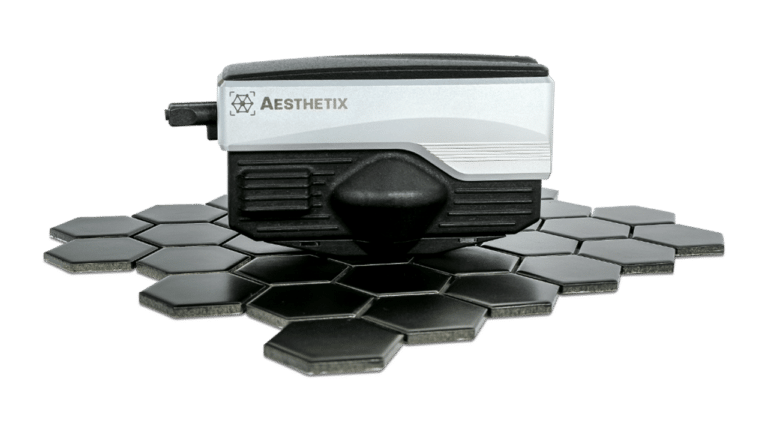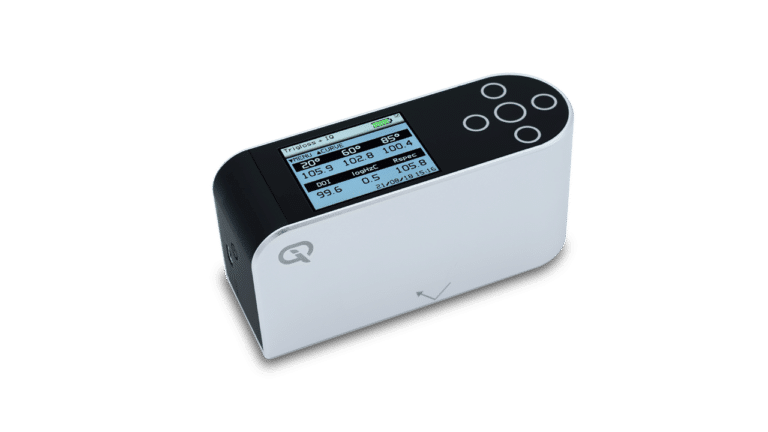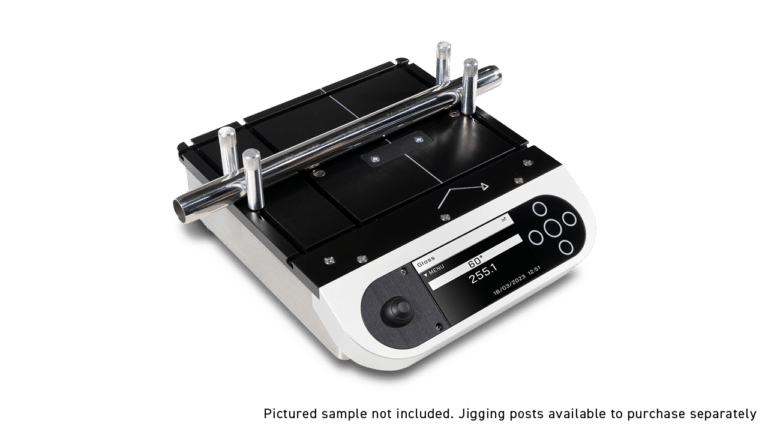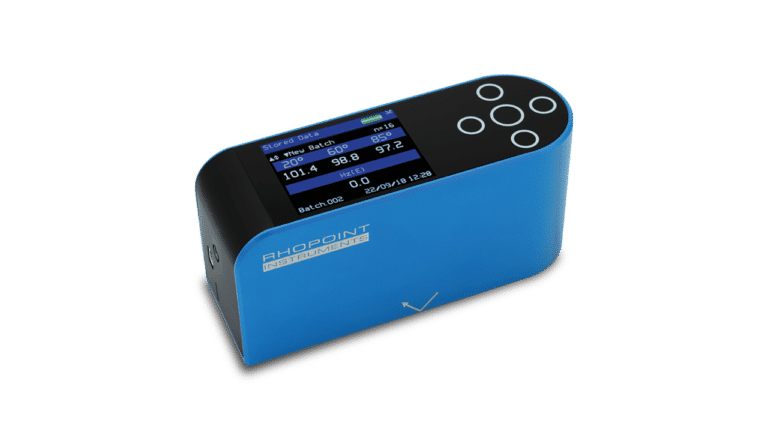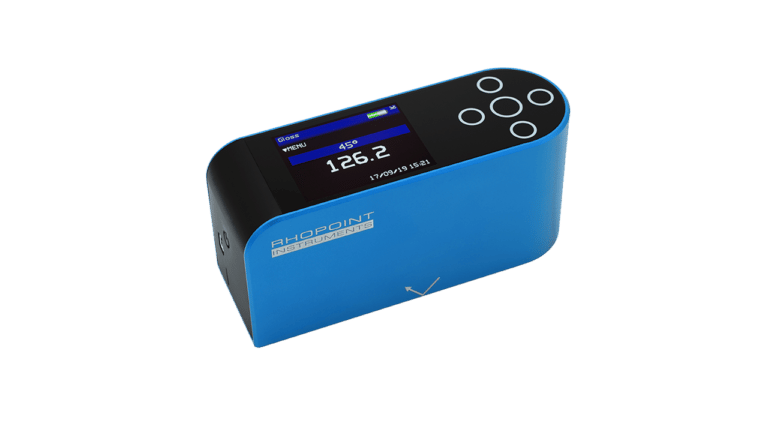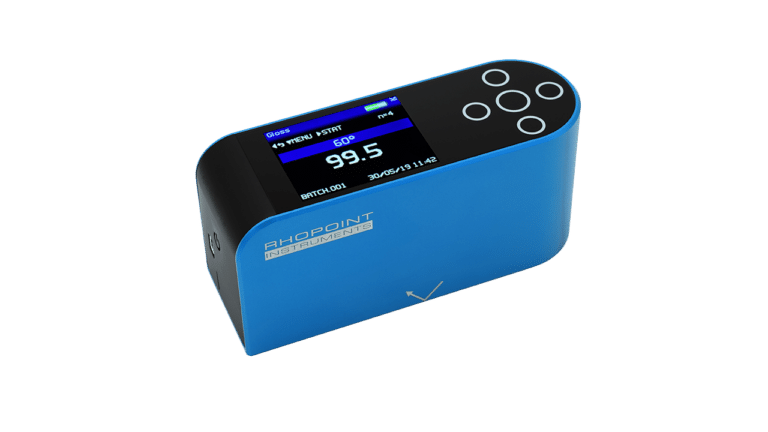Appearance & Measurement Experts since 1986
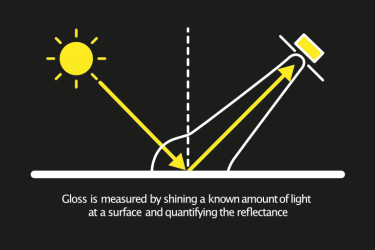
A glossmeter (also gloss meter) is an instrument which is used to measure the specular reflection (gloss) of a surface. Gloss is determined by projecting a beam of light at a fixed intensity and angle onto a surface and measuring the amount of
reflected light at an equal but opposite angle.
There are a number of different geometries available for gloss measurement each being dependant on the type of surface to be measured. For non-metals such as coatings and plastics the amount of reflected light increases with an increase in the
angle of illumination as some of the light penetrates the surface material and is absorbed into it or diffusely scattered from it depending on its colour. Metals have a much higher reflection and are therefore less angularly dependant.
Many international technical standards are available that define the method of use and specifications for different types of glossmeter used on various types of materials including paint, ceramics, paper, metals and plastics. Many industries use glossmeters in their quality control to measure the gloss of products to ensure consistency in their manufacturing processes. The automotive industry is a major user of the glossmeter with applications extending from the factory floor to the repair shop.

A typical glossmeter consists of a fixed mechanical assembly consisting of a standardised light source that projects a parallel beam of light onto the test surface to be measured and a filtered detector located to receive the rays reflected from the surface, Figure 1. The ASTM Method states that the illumination should be defined such that the source-detector combination is spectrally corrected to give the CIE luminous efficiency, V(l), with CIE illuminant SC.
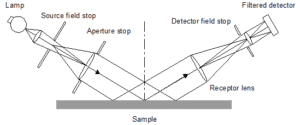
A number of instruments are commercially available that conform to the above standards in terms of their measurement geometry. The instruments are calibrated using reference standards that are usually made from highly polished, plane, black glass with a refractive index of 1.567 for the Sodium D line, and these are assigned a gloss value of 100 for each geometry.
Measurement angle refers to the angle between the incident and reflected light. Three measurement angles (20°, 60°, and 85°) are specified to cover the majority of industrial coatings applications. The angle is selected based on the anticipated gloss range, as shown in the following table.
| Gloss Range | 60° Value | Notes |
| High Gloss | >70 GU | If measurement exceeds 70 GU, change test setup to 20° |
| Medium Gloss | 10 – 70 GU | |
| Low Gloss | <10 GU | If measurement is less than 10 GU, change test setup to 85° |
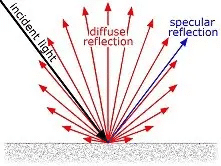
For example, if the measurement made at 60° is greater than 70 GU, the measurement angle should be changed to 20° to optimise measurement accuracy. Two types of instruments are available on the market: 60° single angle instruments, and one type that combines 20°, 60° and 85°. Two additional angles are used for other materials. An angle of 45° is specified for the measurement of ceramics, films, textiles and anodised aluminium, whilst 75° is specified for paper.
The measurement scale, Gloss Units (GU), of a glossmeter is a scaling based on a highly polished reference black glass standard with a defined refractive index having a specular reflectance of 100GU at the specified angle. This standard is used to establish an upper point calibration of 100 with the lower end point established at 0 on a perfectly matt surface. This scaling is suitable for most non-metallic coatings and materials (paints and plastics) as they generally fall within this range.
For other materials, highly reflective in appearance (mirrors, plated / raw metal components), higher values can be achieved reaching 2000 Gloss Units. For transparent materials, these values can also be increased due to multiple reflections within the material.
| Comparison of standards for gloss measurement | |||||
| Standard | 20° | 60° | 85° | 45° | 75° |
| High Gloss | Medium Gloss | Low Gloss | Medium Gloss | Low Gloss | |
| Coatings, plastics and related materials | Ceramics | Paper | |||
| ASTM C346 | X | ||||
| ASTM D523 | X | X | X | ||
| ASTM C584 | X | ||||
| ASTM D2457 | X | X | X | ||
| BS3900 D5 | X | X | X | ||
| DIN 67530 | X | X | X | ||
| DIN EN ISO 2813 | X | X | X | ||
| EN ISO 7668 | X | X | X | X | |
| JI Z 8741 | X | X | X | X | X |
| TAPPI T480 | X | ||||
Each glossmeter is setup by the manufacturer to be linear throughout its measuring range by calibrating this to a set of master calibration tiles traceable to NMI.
In order to maintain the performance and linearity of the glossmeter it is recommended to use a checking standard tile. This standard tile has assigned gloss unit values for each angle of measurement which are also traceable to National Standards such as NMI. The instrument is calibrated to this checking standard which is commonly referred to as a ‘calibration tile’ or ‘calibration standard’. The interval of checking this calibration is dependent on the frequency of use and the operating conditions of the glossmeter.
It has been seen that standard calibration tiles kept in optimum conditions can become contaminated and change by a few gloss units over a period of years. Standard tiles which are used in working conditions will require regular calibration or checking by the instrument manufacturer or glossmeter calibration specialist.
A period of one year between standard tile re-calibration should be regarded as a minimum period. If a calibration standard becomes permanently scratched or damaged at any time it will require immediate recalibration or replacement as the glossmeter may give incorrect readings.
International standards state that it is the tile that is the calibrated and traceable artefact not the gloss-meter, however it is often recommended by manufacturers that the instrument is also checked to verify its operation on a frequency dependent on the operating conditions.
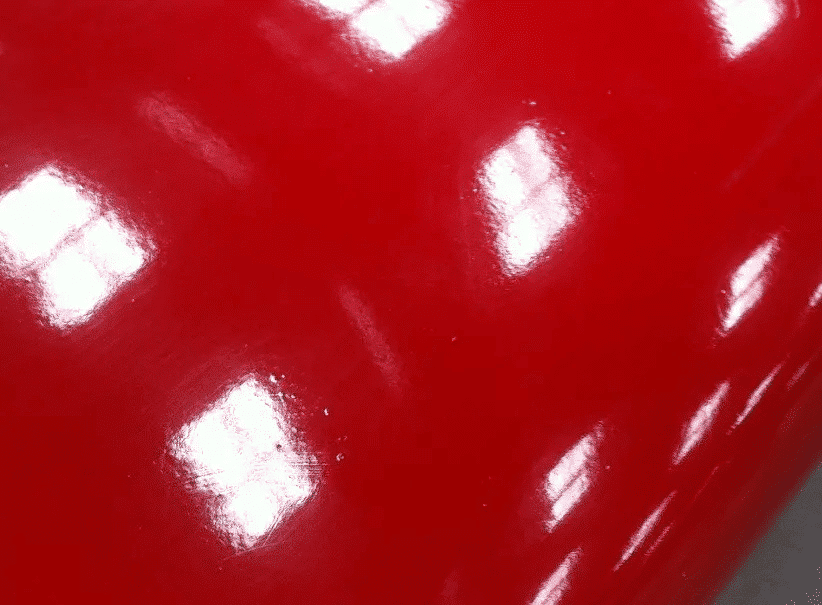
The glossmeter is a useful instrument for measuring the gloss of a surface. However, it is not sensitive to other common effects which reduce appearance quality such as haze and orange peel.
Haze: Caused by a microscopic surface structure which slightly changes the direction of a reflected light causing a bloom adjacent to the specular (gloss) angle. The surface has less reflective contrast and a shallow milky effect
Orange Peel: An uneven surface formation caused by large surface structures distorting the reflected light
Two high gloss surfaces can measure identically with a standard glossmeter but can be visually very different. Instruments are available to quantify orange peel by measuring Distinctness of Image (DOI) or Reflected Image Quality (RIQ) and Haze.
The glossmeter is used in many industries from paper mills to automotive and are used by the producer and the user alike.
Examples include:
The gloss of hardwood flooring is typically measured at 60°.
Wood flooring manufacturer’s finishing lines have been using gloss meters for many years to measure the gloss level in quality control (QC) to ensure they always achieve a consistent, quantifiable visual finish.
| Gloss Reading | Finish |
|---|---|
| Up to 20 GU | Low Gloss |
| 21-40 GU | Medium Gloss |
| 41 GU and up | High Gloss |
Wood flooring distributors want to check their stock to maintain the integrity of their stock allocation. When wholesale orders are filled from two or more different production runs a gloss meter can verify if the finish of that run is close enough to a preceding run to send out on a job site.
Wood flooring dealers are always comparing the finish of their showroom samples to the actual product they receive from distributors and manufacturers. Gloss meters can help verify a major inconsistency that might impact negatively a project installation later.
Wood flooring installation contractors who perform sand and finish operations on site (site-finishers) need to know the gloss level of the finish type they are using; water-based urethanes, oil-modified urethanes, deep penetrating oil, conversion varnishes, etc.
Wood flooring inspectors get asked occasionally to verify gloss levels from two or more conflicting lots or runs to establish whether or not there was a problem with a previous order fulfillment. Mixing production runs does not always look good to a discriminating consumer with a sharp eye. This happens more often than people realise.
